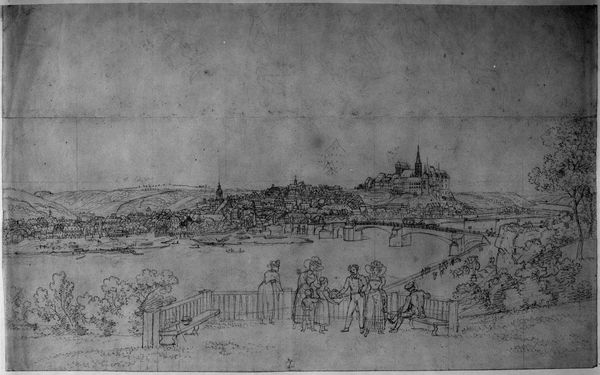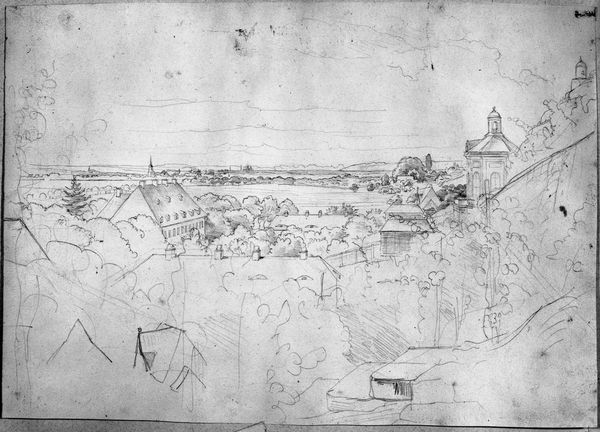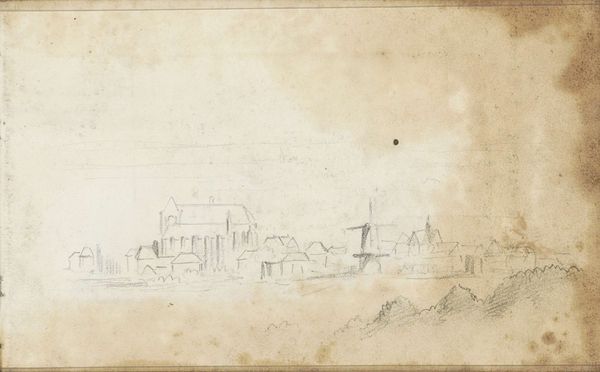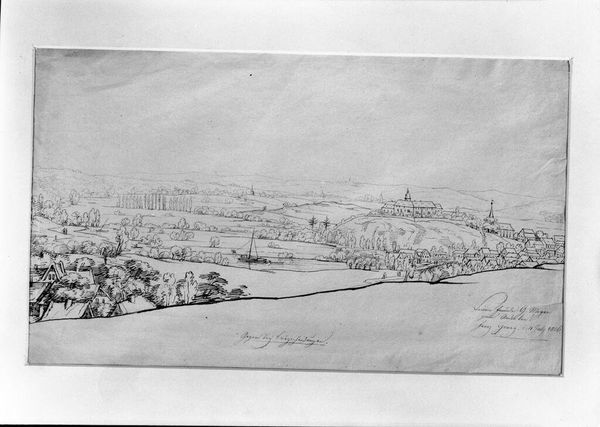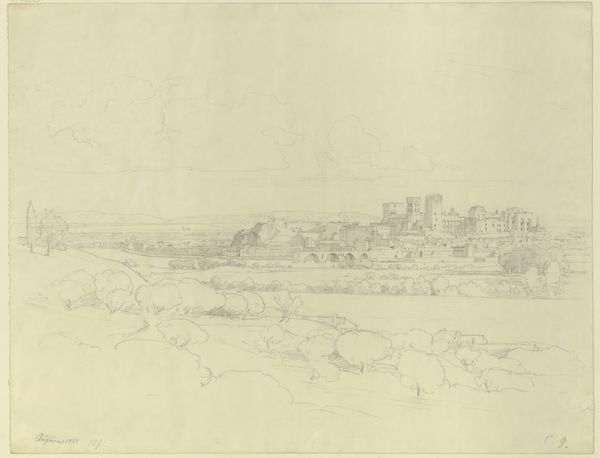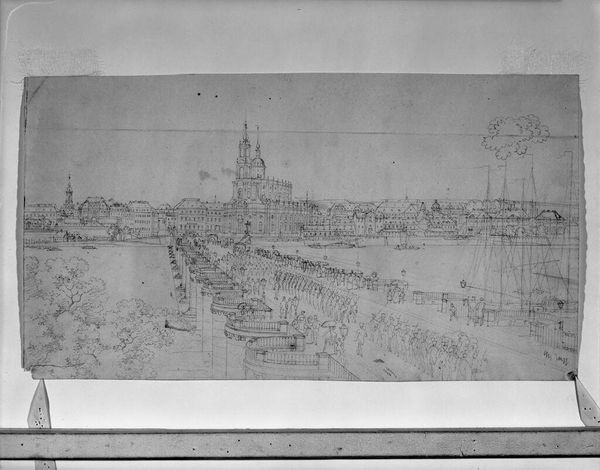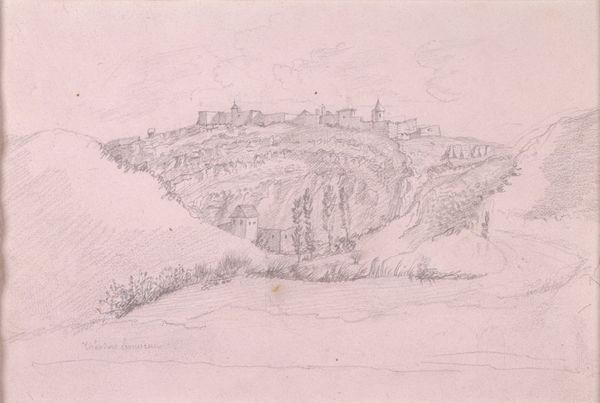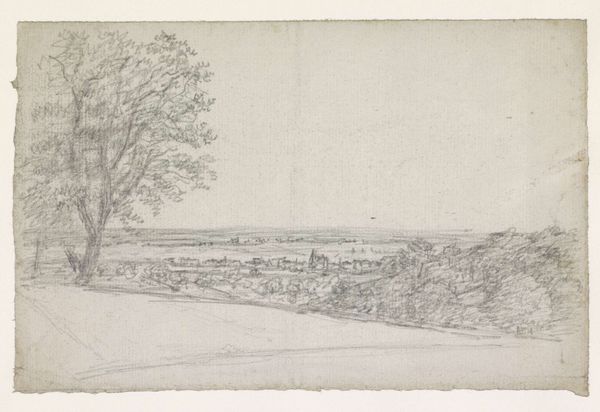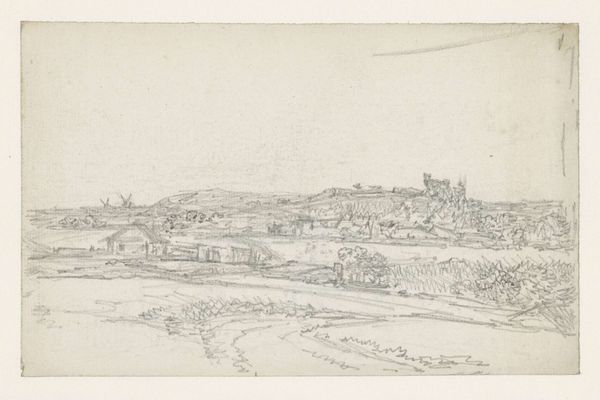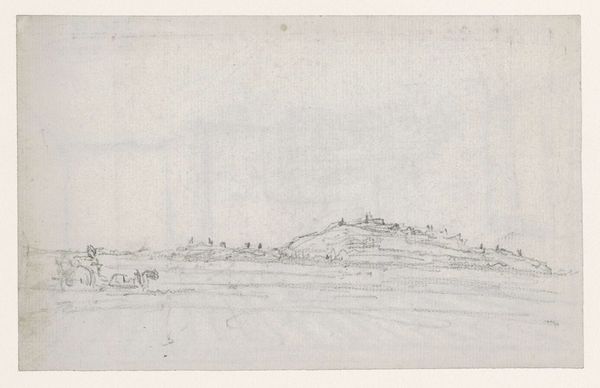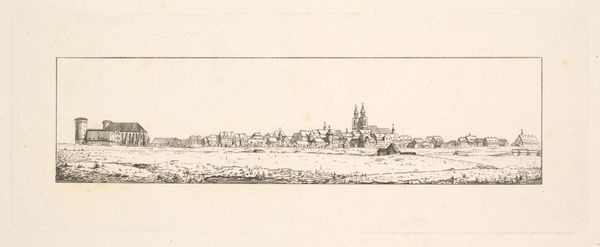
The Village of Dohna; verso: A Rocky Cliff with Scrub Pine c. 19th century
0:00
0:00
Dimensions: 25.6 x 41.5 cm (10 1/16 x 16 5/16 in.)
Copyright: CC0 1.0
Editor: Richter's rendering, "The Village of Dohna," is an early 19th-century landscape drawing. The scene feels so peaceful, almost idyllic. What cultural meanings might be embedded in this type of imagery? Curator: Note how the village nestles within the landscape, the church spire a gentle marker. Richter presents an ordered world, reflecting a longing for stability and harmony that resonated deeply after the Napoleonic Wars. How does this idealized vision connect to folk traditions? Editor: I see what you mean. The figures seem to exist in harmony with nature. Could this be interpreted as a form of cultural preservation, almost? Curator: Precisely. The figures evoke archetypes, connecting the viewer to a shared past and a sense of belonging. Does this idealized rendering obscure any potential social realities of the time? Editor: It's fascinating to consider how this seemingly simple landscape carries such a weight of cultural and psychological symbolism. Thanks for unpacking it with me. Curator: My pleasure. These landscapes reveal how artists use imagery to shape collective memory and cultural identity.
Comments
No comments
Be the first to comment and join the conversation on the ultimate creative platform.
